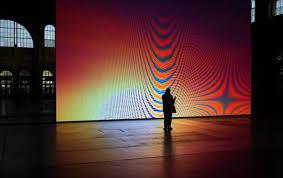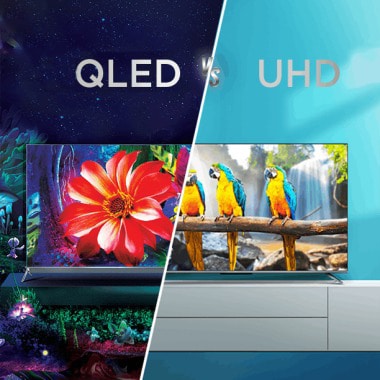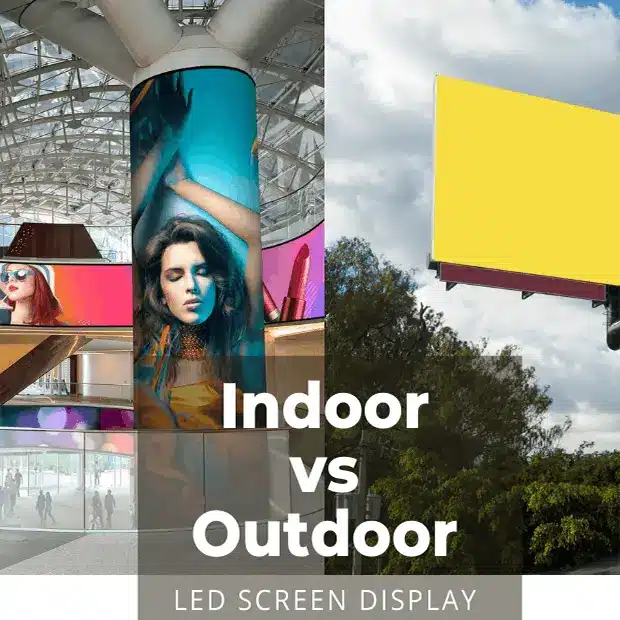In today’s era of rapid technological development, large LED displays have become an indispensable part of our lives.
Whether they are used for commercial advertisements, stadiums, concerts or information displays in public places, these displays have become an important tool in modern society due to their high efficiency, strong visual impact and versatility.
However, faced with a wide array of choices on the market, many consumers and businesses often feel at a loss when it comes to purchasing large LED displays.
This article will provide you with detailed information on how to choose the right large LED display for your needs, and offer practical advice to help you make informed decisions.
Define your needs
Before buying any product, clear demand is the first and most important step. For large LED displays, different needs will directly affect the final choice. Here are some questions you need to consider:
1. Use of the scene
The usage scenario of large LED display determines its technical parameters and functional requirements. For example:
Indoor use: If you are going to install the display in a shopping mall, conference room or gymnasium, you usually need to focus on the color reproduction and viewing angle range of the display.
Outdoor use: If you are going to install the display in a square, street or building facade, you need to consider factors such as waterproof, wind and sunlight resistance.
Rental use: If you are using it for a short-term event (e.g., concert, trade show, etc.), you may need a display that is portable and easy to install and remove.
2. Budget
Large LED displays come in a wide range of prices, from a few thousand dollars to hundreds of thousands of dollars. Defining your budget can help you narrow down your choices and avoid unnecessary wasted time and effort. In general, higher priced displays usually have higher resolution, better materials, and a longer lifespan.
3. Functional requirements
Different usage scenarios have different functional requirements for displays. For example:
- If your main demand is text and image display, ordinary LED display may be enough.
- If you need to play video or dynamic content, you need to choose a display that supports high refresh rate and high-speed transmission.
- If you need to use it outdoors, you need to make sure the display is waterproof, windproof and glareproof.
Understand the basic parameters of the LED display
When buying a large LED display, the following are some key technical parameters that you need to carefully understand and compare:
1. Pixel Pitch
Pixel pitch is one of the most important parameters of LED display, it refers to the distance between individual pixels, usually in millimeters (mm). The smaller the pixel pitch, the higher the resolution of the display and the clearer the image, but also the higher the price. Common pixel pitches include P2.5, P3, P4, P5, P6, P10 and so on.
- Pixel pitch suitable for indoor use: usually choose P2.5 to P4, this kind of display has high resolution and is suitable for close viewing.
- Pixel pitch suitable for outdoor use: usually choose P4 to P10, this kind of display has lower resolution, but the price is lower, and the effect is better from a distance.
2. Size and resolution
The size and resolution of a display has a direct impact on its display. For example, a 10×10-foot display may appear blurry if the resolution is insufficient. Therefore, when choosing a display, the size and resolution should be determined according to the actual usage scenario and viewing distance.
3. Brightness
Brightness is another important indicator of LED display performance, usually measured in cd/m² (candelas per square meter). The brighter the display, the higher the cost, but it performs better in bright light environments.
- Indoor use: Typically 800-1500 cd/m² is required.
- Outdoor use: Typically 5000-10000 cd/m².
4. Viewing Angle Range
Viewing angle range refers to the angle at which the viewer can clearly see the content of the display. Generally speaking, a high-quality LED display can provide a horizontal viewing angle of 120° to 140° and a vertical viewing angle of 60° to 80°. Wide viewing angle displays are more suitable for large events and public places.
Choose the right type of LED display for you
According to different needs, LED displays can be divided into various types. Below are some common types and their characteristics:
1. Indoor LED display
Indoor LED display is thin, portable, easy to install, low power consumption, high color reproduction, but it is sensitive to strong light and harsh environment, not suitable for long time exposure to sunlight, suitable for shopping malls, meeting rooms, gymnasiums, theaters and so on.
2. Outdoor LED display
Outdoor LED display screen is waterproof, windproof, anti-glare, suitable for harsh environments, high brightness, good long-distance effect, but heavier weight, higher power consumption, complex installation, higher initial investment costs, suitable for plazas, building facades, roads, parking lots and other places.

3. Rental LED display
Rental LED display screen is portable, easy to install and dismantle, suitable for short-term use, but the rental cost may be higher, the cost of long-term use is higher, suitable for concerts, exhibitions, events promotions and other short-term activities.
The checklist before purchase
Before buying a large LED display, here are some key points that you need to check and verify one by one:
1. Manufacturer and brand
It is very important to choose a reputable manufacturer and brand. Well-known brands usually offer better quality assurance and after-sales service. You can find out the brand’s reputation and product quality through internet search, industry reports or user reviews before purchasing.
Choose cailiang led display manufacturer with led global ranking qualification, more good quality assurance and after-sales service, you can contact us.
2. Product certification
Ensure the display has obtained the relevant safety certification and quality certification, cailiang led display has obtained ROHS certification, BACL (UL), CE certification, FCC certification, Japan PSE certification, C-TICK certification, CB, BIS, EAC and so on.
3.After-sales service
Maintenance and warranty of large LED display is very important. Before purchasing, you need to know the manufacturer’s after-sales service policy, including the warranty period, maintenance response time, parts supply, etc.
4. Installation and commissioning
Installation and commissioning of large LED displays usually requires a professional team to complete. Before purchase, you need to clarify whether the installation and commissioning is included in the price of the product, or you need to pay extra.
How to maintain your LED display
After purchasing and installing an LED display, how to maintain it to extend its service life is also an important issue. Here are some simple maintenance tips:
1. Clean the screen
Regular cleaning of the display surface will prevent dust and dirt from damaging the display. You need to use a soft cloth and professional cleaner when cleaning, avoid using strong acidic or strong alkaline cleaner to avoid damaging the screen surface.

2. Check the power supply and wiring
Problems with the power supply and wiring of the display may cause the display to fail to work properly or even be damaged. Check the power supply and wiring regularly to make sure they are in good condition.
3. Update the software
If your LED display supports software updates, updating the software regularly can fix potential bugs and improve the performance and compatibility of the display.
4. Storage and Transportation
If you need to store or transport your LED display, you should follow the manufacturer’s recommendations and avoid storing or transporting it in an environment with high temperature, high humidity or high vibration.
Common Problems and Solutions for LED Displays
When using LED display, you may encounter some common problems. The following are some common problems and their solutions:
1. The display appears jittery or flickering
Reason: The refresh rate of the display may be set incorrectly, or there may be a problem with the software.
Solution: Check the refresh rate setting of the display to make sure it matches the frame rate of the content being played. If the problem persists, you may need to contact technical support.

2. The display appears dead PIXEL
Cause: Some pixels are damaged and cannot display colors properly.
Solution: Contact the manufacturer or after-sales service team for repair or replacement.
3. Display is not bright enough
Cause: The brightness of the display may be set too low, or the brightness of the display does not meet the requirements of the usage environment.
Solution: Adjust the brightness setting of the display to ensure that it meets the requirements of the usage environment. If the problem persists, you may need to upgrade to a higher brightness display.
4. The display cannot be connected
Cause: The wiring may be incorrect or there may be a problem with the control system.
Solution: Check for proper wiring and make sure all connectors are tightly connected. If the problem persists, it may be necessary to contact technical support.
Conclusion
Choosing a large LED display that suits your needs requires comprehensive consideration of various factors, including the use of the scene, budget, technical parameters, brand, after-sales service and so on.
We hope that through the introduction of this article, you can have a clearer understanding of the large LED display, and be able to make a wise choice.
If you have other questions or need more detailed advice, please feel free to contact us. We will be happy to serve you and provide you with high quality large LED display solutions.
FAQ (Frequently Asked Questions)
1. What are the advantages of large LED displays?
Large LED displays offer high brightness, wide viewing angles, durability, energy efficiency and flexible size customization for advertising, messaging and event displays in commercial and public spaces.
2. How much do large LED displays cost?
The price of large LED display varies depending on the size, resolution, brand and other factors, please consult specifically with cailiang led display supplier.
3. What size of large LED display do I need for my space?
Choosing the size of your large LED display should be based on the size of your space and your display needs, it is recommended to measure the space first or consult a professional to determine the most suitable size.
4. How do I troubleshoot a large LED display?
Common troubleshooting problems with large LED displays include lack of brightness, all-white or all-black screen, etc. For the problem of lack of brightness, check the brightness of the screen. For insufficient brightness, check whether the power supply is properly connected or adjust the brightness setting; if the screen is completely white or black, it may be a fault of the power supply or driver board, so it is recommended to check the connection or replace the driver board.
5. Can large LED displays be used outdoors?
Yes, large LED displays can be used outdoors, but you need to choose products that are specifically designed for outdoor use, which are usually waterproof, glare-resistant and wind-resistant.
6. What maintenance is required for large LED displays?
Large LED displays need to be cleaned regularly to prevent dust buildup, check that power and signal cables are properly connected, and ensure that the cooling system is functioning properly to avoid overheating. It is also recommended to regularly check and replace aged components to extend the life of the display.


